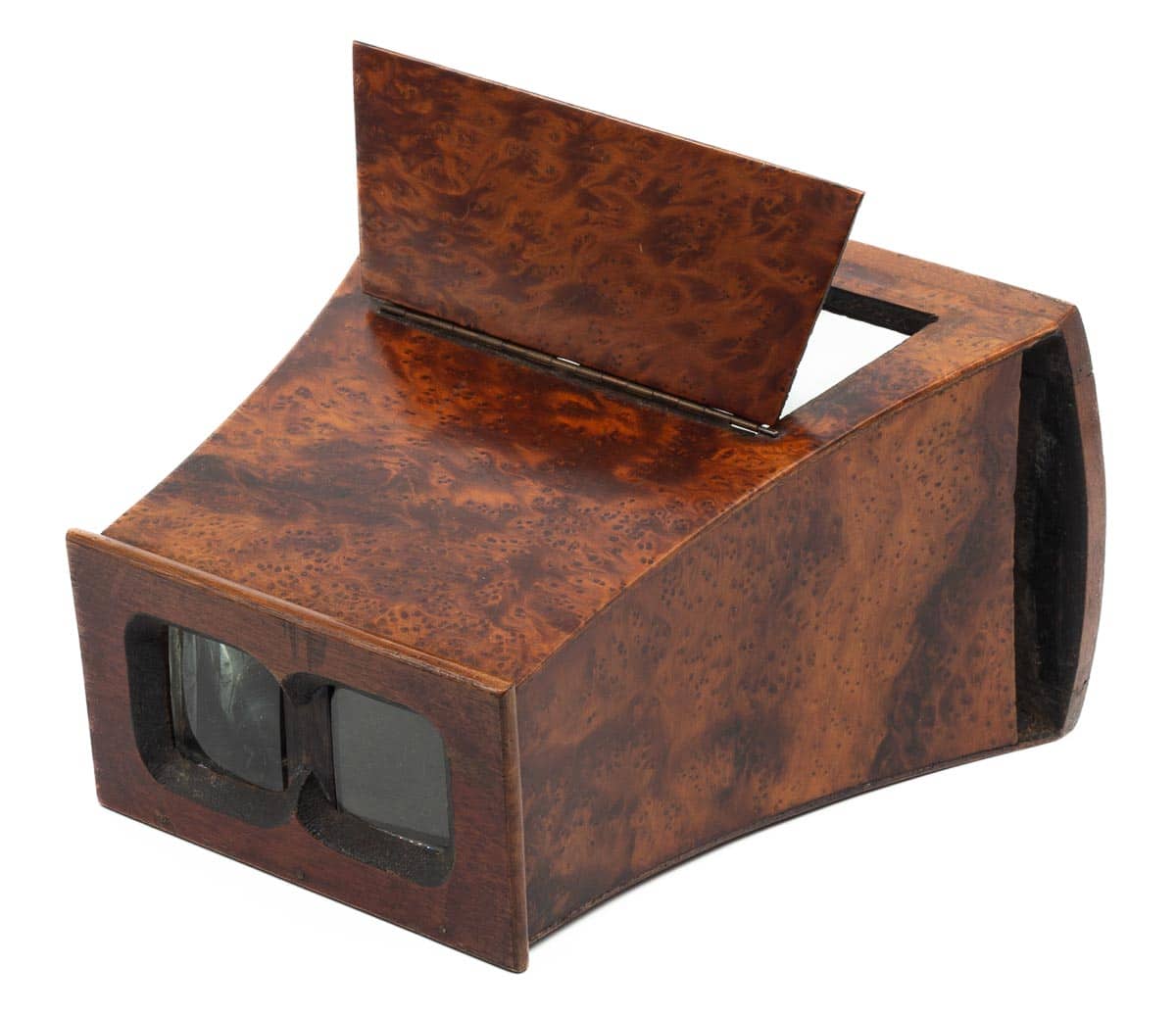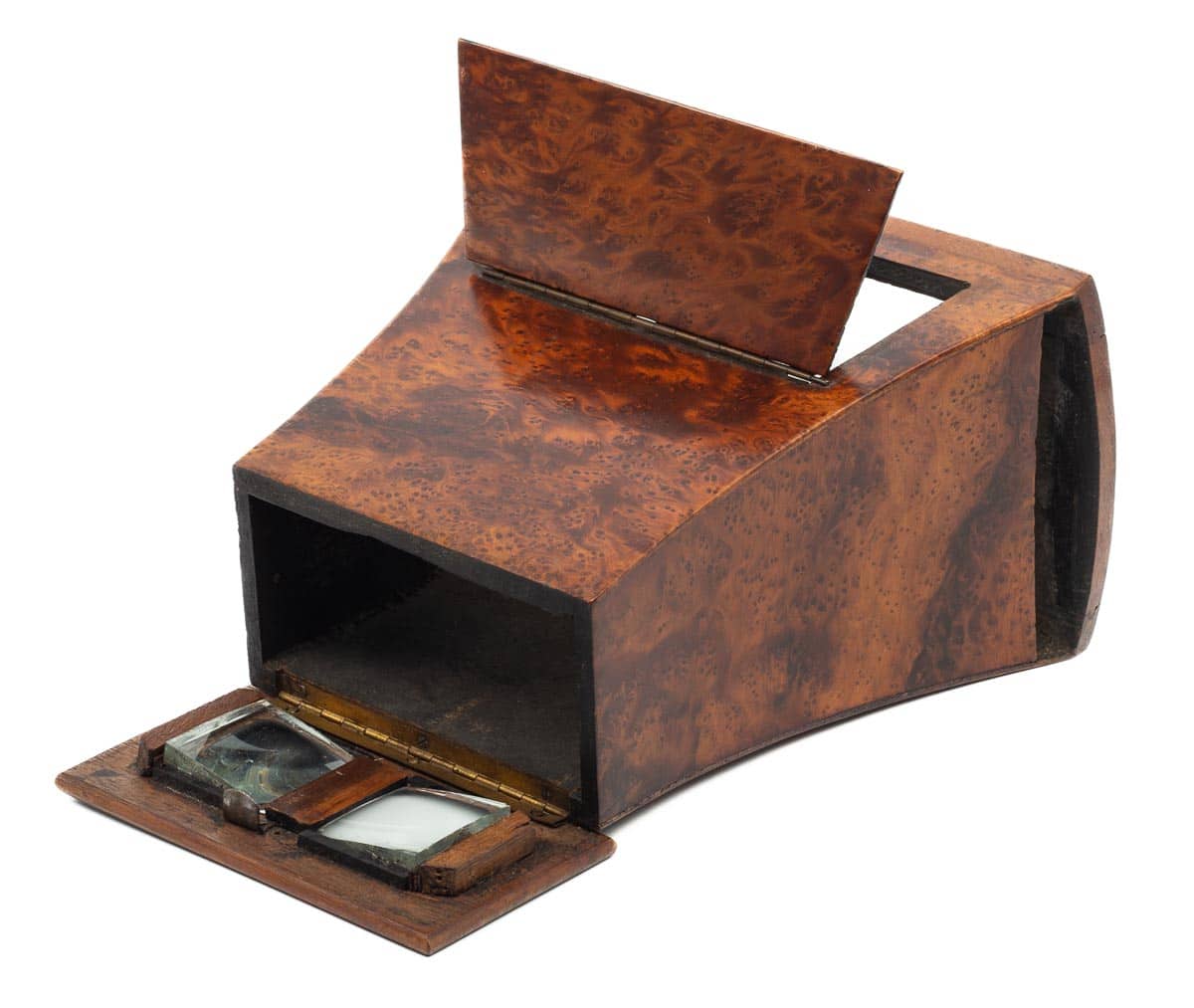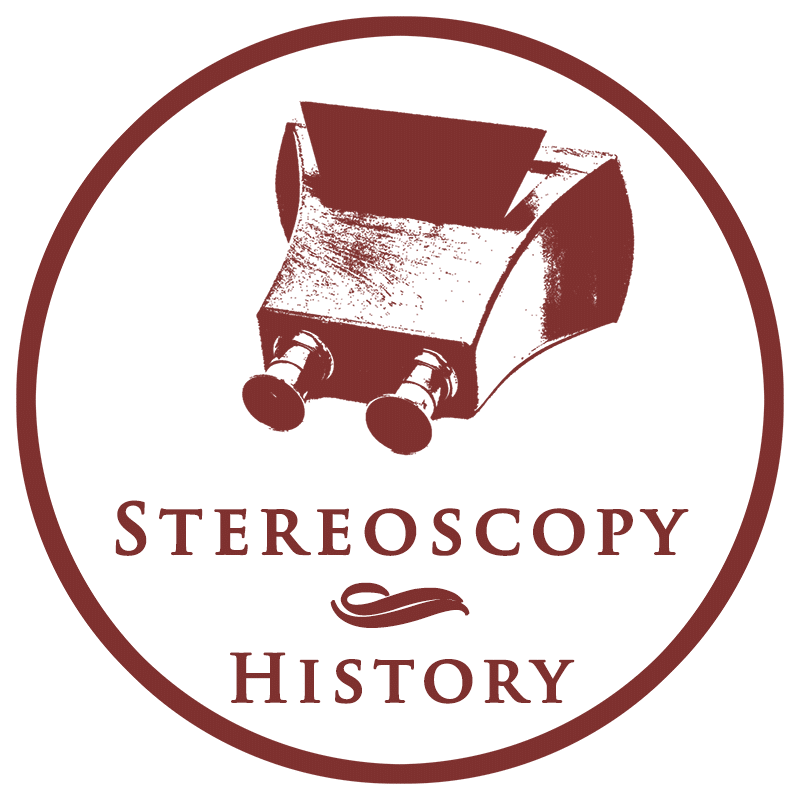
The Stéréoscope à verre prismatique is an attractive Brewster-style refracting stereoscope that was most likely manufactured by Mattey1 or the companies that were acquired by Mattey in the early 1900s. The stereoscope can be used for viewing paper card stereoviews and glass slides. The front panel with the lenses can be opened.

Specifications
| Manufacturer: | Mattey (attributed) |
| Year of introduction: | c.1902 |
| Year of manufacture: | 1902–1930 |
| Type: | Hand-held |
| Viewer: | Single-view |
| Serial number: | None |
| Stereoview support: | Glass and Paper |
| Stereoview format: | 8.5 x 17 cm |
| Lens focussing: | No |
| Inter-ocular adjustment: | No |
| Eyepiece blinders: | No |
| Dimensions (L x W x H): | 19 x 16.5 x 11 cm |
| Construction: | Burr walnut |
Glossary: hand-held / inter-ocular adjustment / refracting / single-view
Mattey
Mattey was one of the leading manufacturers of stereoscopes in France. The company offered the widest range of stereoscopes of all manufacturers. The company was founded in 1872, but its expansion began with the establishment of Société Mattey père et fils on 31 December 1902. The names behind the company were André Élie Victor Mattey (1844–1919), and his son Albert Georges Mattey (1873–1940). Mattey’s business grew through acquisitions. The most important was the acquisition of Maison Legendre in 1902, which set the foundation for Mattey’s stereoscope business.
Société Mattey père et fils was dissolved on 1 January 1912, and the company was continued by Albert Georges as Stéréoscopes A. Mattey. The company was located at 208, Rue Saint-Maur in Paris from 1906 but moved to 15, Rue Clavel in 1936. After the Second World War, the company continued as Société des Anciens Établissements A. Mattey. Mattey’s products were also branded Unis France, a collective trademark to guarantee the French origin of high-quality products, made by different companies.
The complete story of Mattey
References
- Mattey (1922), Stéréoscopes, p. 15 ↩︎
